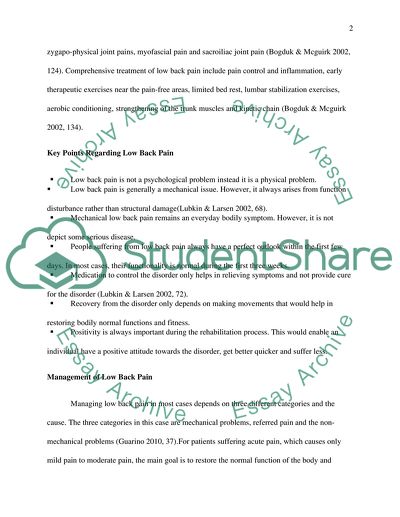Cite this document
(“Treatment and Management Strategies of Low Back Pain Assignment”, n.d.)
Treatment and Management Strategies of Low Back Pain Assignment. Retrieved from https://studentshare.org/health-sciences-medicine/1840871-critical-appraisal-of-an-exercise-intervention
Treatment and Management Strategies of Low Back Pain Assignment. Retrieved from https://studentshare.org/health-sciences-medicine/1840871-critical-appraisal-of-an-exercise-intervention
(Treatment and Management Strategies of Low Back Pain Assignment)
Treatment and Management Strategies of Low Back Pain Assignment. https://studentshare.org/health-sciences-medicine/1840871-critical-appraisal-of-an-exercise-intervention.
Treatment and Management Strategies of Low Back Pain Assignment. https://studentshare.org/health-sciences-medicine/1840871-critical-appraisal-of-an-exercise-intervention.
“Treatment and Management Strategies of Low Back Pain Assignment”, n.d. https://studentshare.org/health-sciences-medicine/1840871-critical-appraisal-of-an-exercise-intervention.


